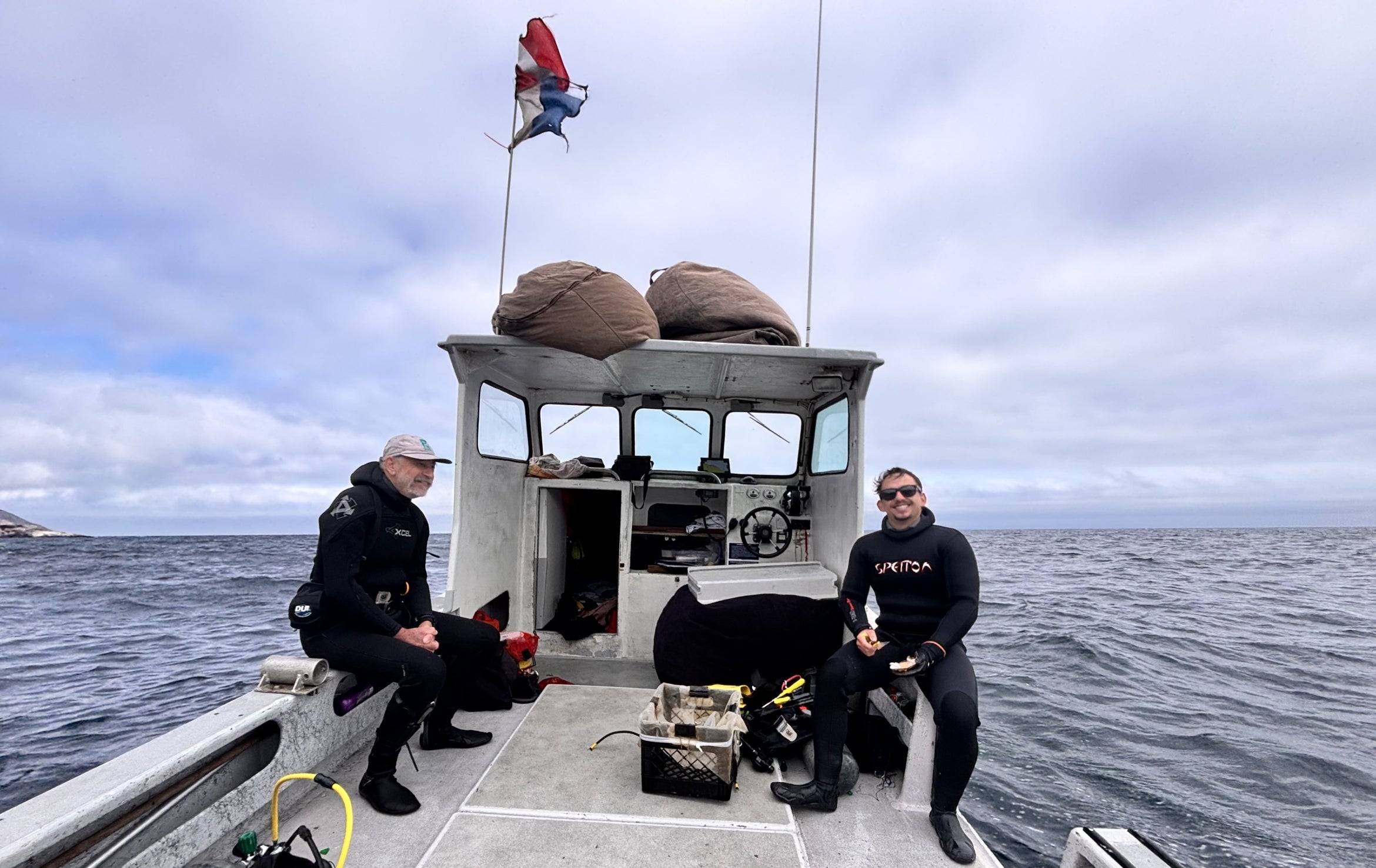
The Santa Barbara Channel is a hotbed of biodiversity, thanks to the many species whose ranges meet and overlap in the area. As a transition zone between the cold water of the California Current and the warmer seawaters of Southern California, the channel hosts a variety of fish, birds and marine mammals that live in, feed in and travel through it.
And yet, we may only still be scratching the surface of its biodiversity.
“There’s a hidden biodiversity in our reefs. By ‘hidden,’ I mean the great number of small species that we generally overlook,” said UC Santa Barbara marine ecologist Bob Miller, who directs the National Science Foundation-supported Santa Barbara Coastal Long Term Ecological Research (SBC LTER) program, focused on kelp forests and their connections to the shoreline and open ocean.
While many of the fish, cetaceans and other more conspicuous or “charismatic” animals have been well studied, a whole world of less noticeable creatures exists on the sea floor, hiding in rocky reefs and burrowing in the sand. These invertebrates — worms, mollusks, sponges, sea stars and others — are the unseen predators, recyclers of organic matter, filterers of water, and the base of the local food web, which is why it’s necessary to get a clear picture of these species, Miller said.

Enter the “bioblitz,” a concentrated effort to describe as many species as possible in a designated area, in this case the SBC LTER. For one week, eight taxonomists from across the country joined UCSB researchers and students to collect and classify these cryptic creatures — from morphology to genetics — in partnership with the Smithsonian Institution.
“The sea floor is changing,” said Skylah Reis, a doctoral student researcher in the labs of Miller and fellow marine scientist Mark Page. Reis coordinated the collection and classification efforts for UCSB and will use the data in her dissertation. Events like “the Blob,” a nickname for an underwater heat wave that occurred from 2014-2016, disrupt life on the sea floor. The heightened temperature affects how the inhabitants feed and causes stress to the locals, while increasing the range for their warm water tolerant cousins and rivals, who move in and set up shop.

Given ongoing phenomena such as ocean warming and acidification, Reis said, it’s important to get a sense of the population — which species are native, which are invading and which may always have been there but have never been officially noted. For that, Reis added, there needs to be a set of measurements that serve as a baseline.

To do this, the researchers headed into the water and retrieved several Autonomous Reef Monitoring Structures (ARMS), stacks of nine-inch (22.5 cm) square PVC plates left on several reefs in the channel for the cryptics to colonize. After extracting these sea life-encrusted ARMS and sampling other seafloor habitat around them, the researchers began sorting the marine organisms from the chaff in labs at UCSB’s Campus Point, carefully documenting the process.
As they sifted through debris and extracted the marine creatures, samples were handed
to the taxonomists in the group based on their specialties — the worm expert, the bryozoan specialist, the clam connoisseur and so on — for classification. The animals were carefully photographed and assigned identification numbers, and packed up to be sent to collaborators at the Smithsonian, who will then sequence their genetics. Results will be entered into species databases.
“I don’t know yet if we have discovered any new species from the bioblitz or not; I’ll need more time to find out,” said UCSB marine biologist and bioblitz participant Thomas Turner, who recently found several new species of sponge in the Channel. “I’m certain that there are new species to be discovered there, however.”
In addition to being a census for the animals of the Santa Barbara Channel floor, the data collected will also paint a clearer, current picture of species diversity and richness and, according to Reis, a better

understanding of how the environmental gradients of the channel impact biodiversity of both known and cryptic species.
“We sampled across a temperature and runoff gradient; we were also able to sample in areas of differing levels of marine protection,” said Reis, whose own work involves the ecosystem function and biodiversity of artificial reefs compared to natural reefs. The variety of samples, she said, “will help us assess the effects of marine protection on species that are not usually focused on.”
In the meantime, the scientists look forward to having an additional library of organisms to help identify the ones they collected in the channel. It’s also another huge piece in the interlocking puzzle of animal communities that live in waters of the region, and it will serve as a baseline for population changes on the sea floor.
The bioblitz was made possible with the help of the Channel Islands National Marine Sanctuary and the Southern California Bight Marine Biodiversity Observation Network, supported by NASA, the Bureau of Ocean Energy Management, and NOAA.



